How To Identify And Treat Cannabis Root Problems
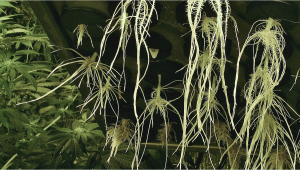
- 1. What is root rot?
- 2. Root rot symptoms
- 3. What causes root rot?
- 4. How to prevent root rot?
- 5. How to treat root rot?
- 5. a. Beneficial bacteria
- 6. Identifying and treating root rot for soil or coco-coir crops
- 7. In conclusion
Cannabis root problems are usually called root rot. Problems in the roots can be caused by different organisms such as bacterias, fungi, and parasites and although the symptoms are similar, they don’t always look exactly the same. Read along to prevent root problems with your cannabis seeds!
1. What Is Root Rot?
Root rot is a condition that can ultimately kill plants. This condition affects roots when they are not in an optimal environment and affects them when they’re more vulnerable, especially when they are already stressed or shocked.
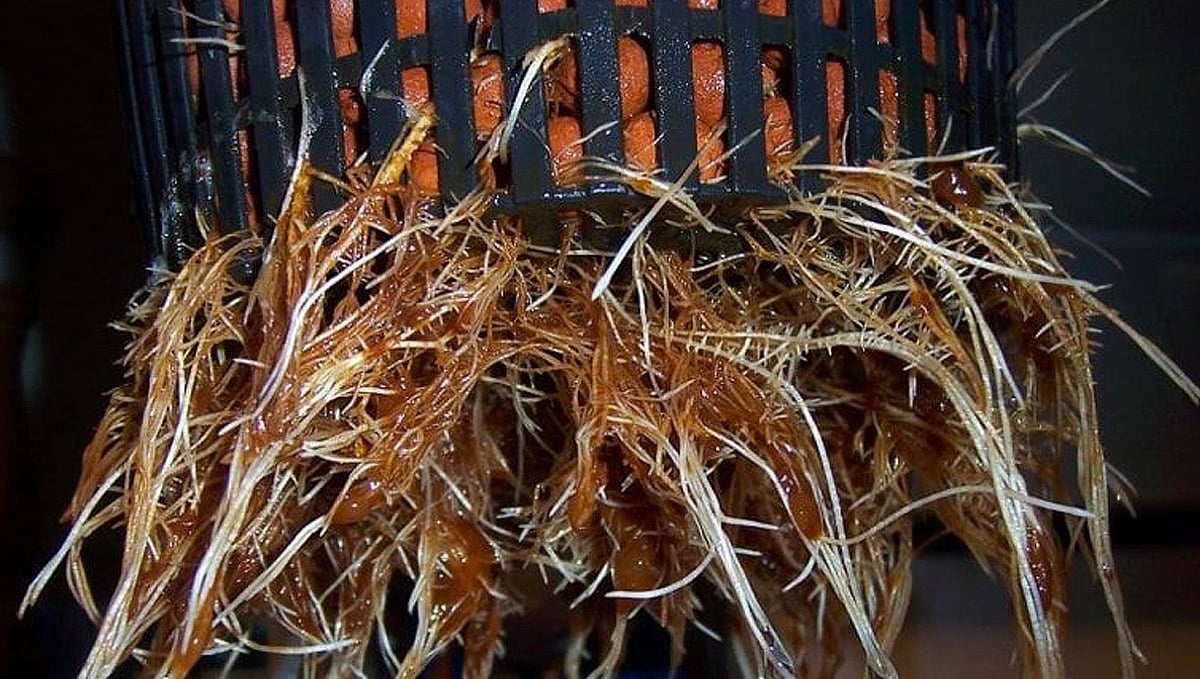
Organisms such as bacteria, algae, and fungi (among others) will attack the roots, making them into brown slime. This brown slime is unable to absorb nutrients and water and in most cases is impossible to fix them.
2. Root Rot Symptoms
Because the first symptoms of root rot occur under the medium, growers are often not aware of the problem until it is more serious. Cannabis root rot can cause leaf symptoms that can look like any deficiency: cannabis leaves get burnt edges or tips; yellow or brown spots, nutrient deficiencies, and curled edges among others.
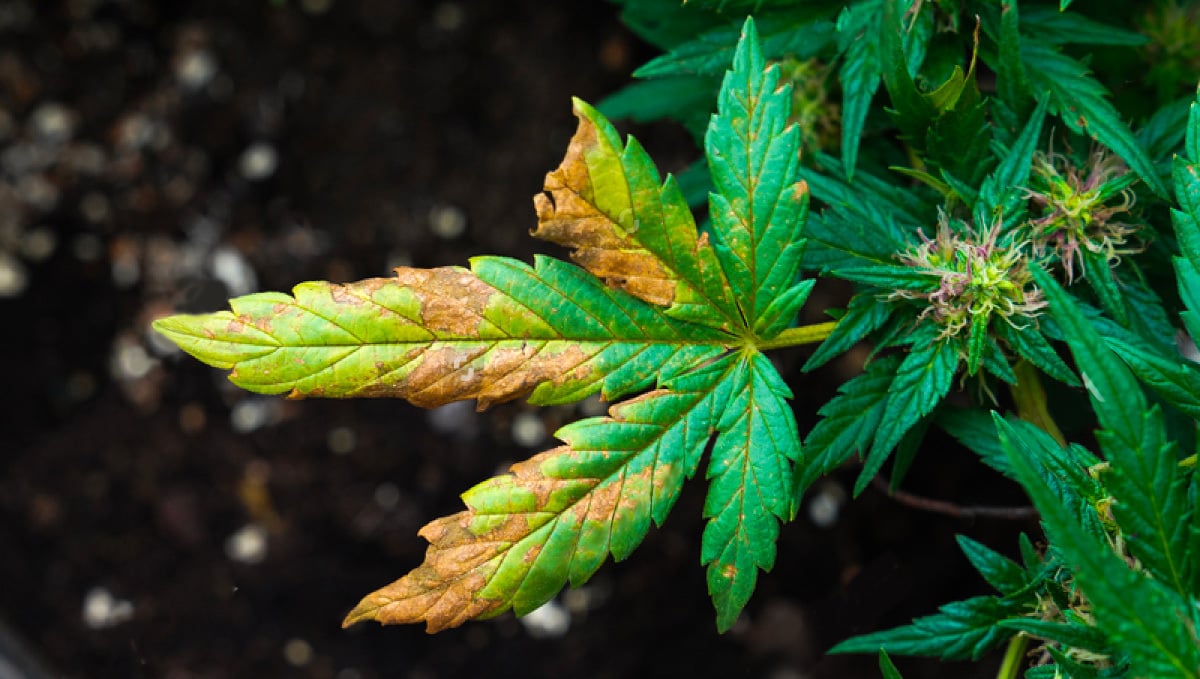
When plants start showing the consequences of root rot, such as yellow leaves or stunted growth it may be already too late.
3. What Causes Root Rot?
Root rot occurs when the roots are affected by a bad organism after they are already stressed. Root stress can be caused by any of the following things:
Excessive Heat
Roots in a hotter medium have a tendency to develop problems associated with fungi and bacteria.
Excessive Cold
Cold roots are unhappy roots, low temperatures in the medium can shock the roots and can cause wilting among other problems, resulting in root rot.
Overwatering
Too much water tends to attract some type of bugs that reproduce in wet mediums and may drown your roots, both of these problems will result in damaging the roots.
Thick Medium
If your medium is too thick, it may prevent the roots from being able to get oxygen.
Big plant in a small container
When your plant has overgrown the pot it is in (meaning the pot is too small for your plant to develop properly) you increase the chances of developing root rot. If you reach a point where the roots need to grow more but they can’t due to not having space, they will start to rot.
Hydroponics
Root problems are common in hydroponics, this happens when you don’t use an air rock to oxygenate the water. Depending on your setup oxygenating the water is required, not doing it will ultimately kill the plant.
Light leaks
If there is a light leak into your hydroponic reservoir, or into your growing medium, it can quickly allow for a boom in unwanted nasties.
Decayed matter
The decayed matter inside of a hydro reservoir or in a growing medium can lead to populations of bad bacteria taking a foothold and quickly populating
4. How To Prevent Root Rot?
Preventing root rot is relatively easy. By solely providing an optimal medium for them to grow, you will prevent any possible problems they can have. An optimal medium for roots to grow means providing the proper temperature, humidity, water, oxygen, and size of the pot.
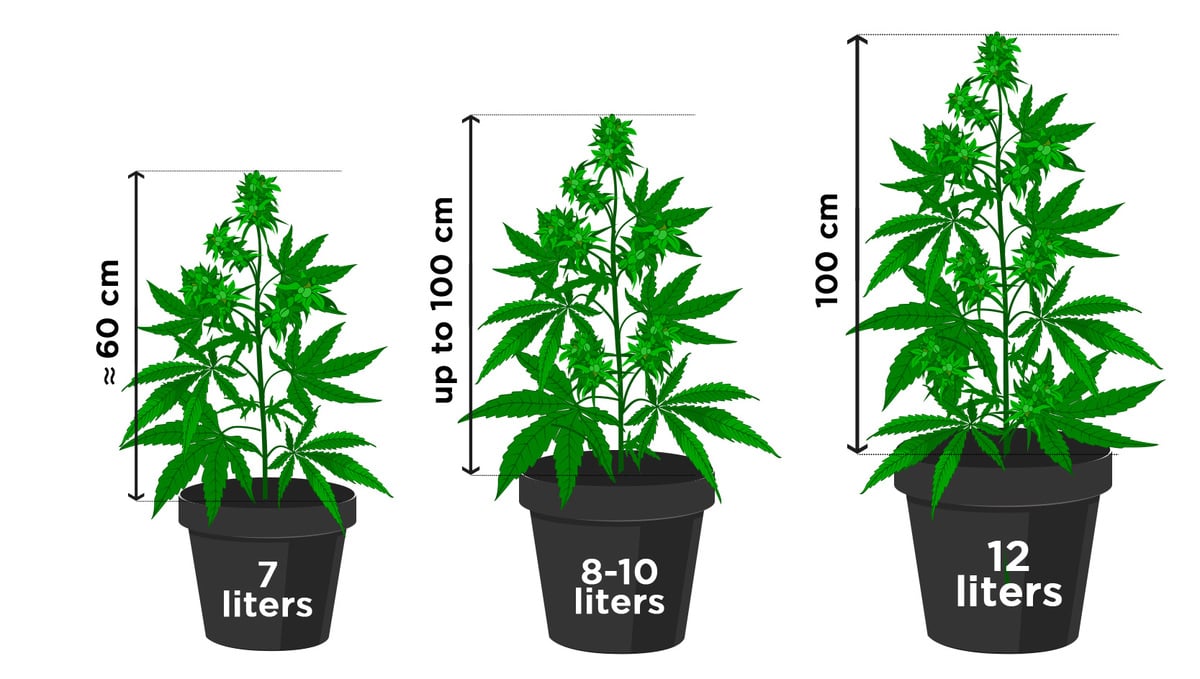
Another crucial way to ensure you don't have to deal with root rot is to thoroughly disinfect and clean periodically throughout each grow cycle. You should also totally clean out and fully disinfect your grow area in between each run. Think of your grow room in the same way you would think of your kitchen. Hygienic practices are of the absolute utmost importance, and by implementing an intensive cleaning routine you will give your plants the best chance at not only surviving but also thriving and producing the highest quality buds with the largest yields. High-quality air filtration units can also go a long way in keeping any and all fungal and pest issues at bay. UV-C disinfection and air filtration units have become part of all standard commercial cannabis cultivation setups, so these are also something that should be considered for hobby grows. It's also important to understand proper pH and TDS or EC levels. By feeding your plants the correct nutrients, at the correct levels, and in water that has been properly pH regulated you give your plants the best chance of skipping any root rot (and all other diseases and deficiency) issues from the get-go.
Young, undeveloped root systems are much more susceptible to root rot than established root balls, so always take the absolute top car with young plants and try to disturb them as little as possible. This is especially important for hydro growers, as the roots are much more exposed and far easier to damage than soil or coco-coir setup. If you take care of these, there won’t be a problem. If you failed to provide these and your plants are already suffering from root rot, there’s not much you can do.
5. How To Treat Root Rot?
The first step to treating root rot is to identify what is causing it, as said above, root rot is caused by not providing an optimal environment for your roots. Because root rot is caused by different organisms, a solution that works for some growers may not work for others. You should start by checking the environmental factors, such as humidity, temperature, watering frequency, and drainage of the medium. Adjusting the environment is more of a long-term solution, after you adjusted whatever was wrong with it, it's time to combat the root rot with a short-term solution. To combat root rot immediately, some growers use a mix of 100ml of bleach or hydrogen peroxide with 1L of water.
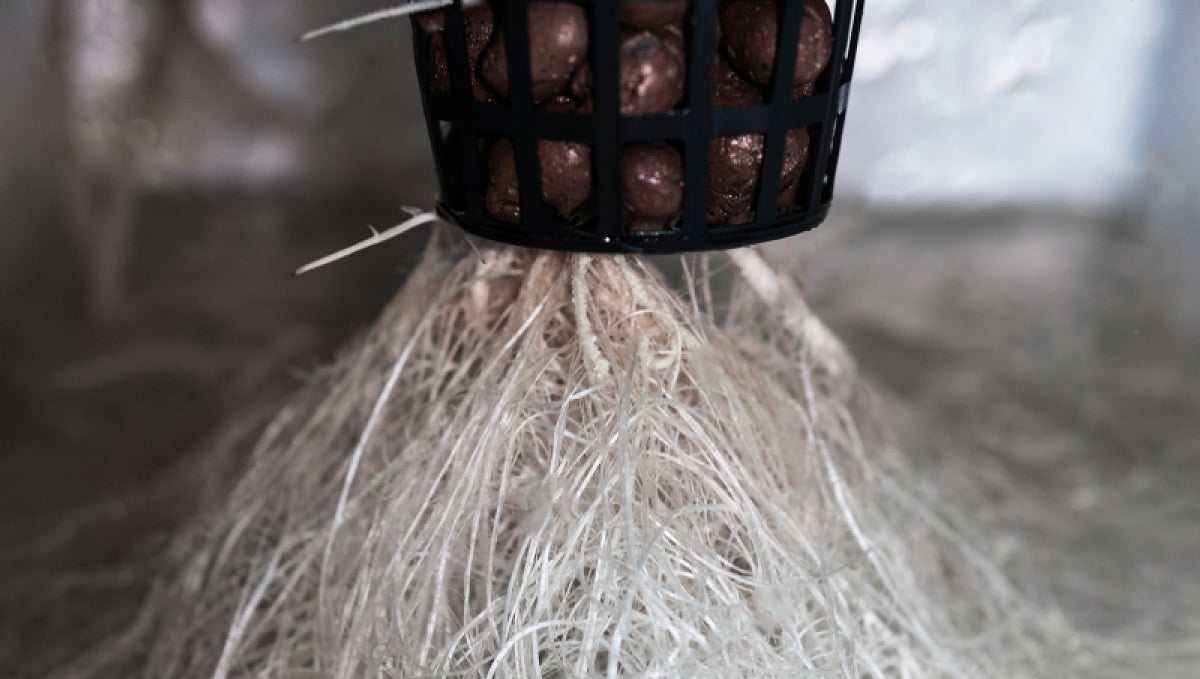
Using hydrogen peroxide will kill the organisms causing root rot but can be bad if you’re growing organically because it can kill good bacteria too. In such low concentrations, bleach shouldn’t be harmful but this is a cheaper alternative and may be harmful to the bacteria in some cases. The best way to treat root rot if you are willing to send a little bit more is to use root supplements. These products are mixed into the water and provide everything a root needs to grow healthy and also combat root rot. There are a variety of root supplements out there and the one you choose should be based on what you can afford and what will work in your case.
Beneficial Bacteria
Here at Fastbuds we always recommend adding beneficial bacteria to your feed water. This can not only help with making nutrients available to the plant but will also help in preventing and treating the scourge of root rot (among other issues). The range of beneficial bacteria supplements available is ever-growing, but there are a few in particular that we suggest. These include:
CANNAZYM by CANNA
This high-quality product helps in breaking down the dead root material and encourages beneficial micro-organisms. This can be used in all forms of cannabis cultivation.
Botanicare Hydroguard
If you are a pure hydro grower, check out this fantastic additive. It assists in the decomposition of organic matter in hydroponic gardening and contains bacillus - a natural bacterial root inoculant.
Great White Root Powder
Although this is more of a root-boosting stimulant, it also aids in root area management and cleaning. This is an additive that everyone should be using with every grow, no matter the style of cultivation.
Advanced Nutrients Voodoo Juice
This product contains a combination of eight microbial super strains that helps boost the roots and root zone which not results in faster growth and healthier plants but also increased yields.
5. Identifying and Treating Root Rot for Soil or Coco-Coir Crops
Identifying and treating root rot in crops that are run in a soil or coco-coir blend, rather than hydroponically, can be a real pain in the behind. As mentioned above, root rot will present as a range of other issues, which can be super confusing - especially for novice growers. Still, really it is just as big an issue for cultivators with years of experience as it can be so hard to diagnose without being able to have a good look at what's going on underground, or in the pots. So, how do you identify root rot for crops where the roots are very difficult to see?
The first step is to monitor your plant for any unusual signs of distress. Look for things like yellowing leaves, wilting, and stunted growth. If you suspect root rot may be an issue then give the pot a shake - if it feels excessively light (like there's almost no substrate left) then this could be another sign that root rot is present. At this point, you really should just assume that the issue could very well be root rot, especially if you have already tried to treat the other presenting problems to no avail. Ask yourself this question, have I been overwatering my crop? The answer should be easy enough to come by, but if you can find a clear answer then you need to do a little more research in general. Overwatering is a common mistake for new growers, and if your pots and substrate have incorrect drainage capabilities then root rot is an almost certainty, at some point anyway.
Once you've identified that there is an issue, then it's time to treat it. It's important to remember that root rot can be fatal for plants, so you should act fast as soon as symptoms are spotted. The best thing to do is let your pot fully dry out. This may take a few days, depending on the drainage of the pot in question, and your plant could die during this time. But there is really no other choice. Once it has dried right out, it's time to VERY CAREFULLY remove the plant from the pot and shake some of the substrate from the roots. You don't need to remove everything, just enough to have a good look. If you see roots covered in brown sludge then we have a bingo.
Next up, prepare a new pot (with enough drainage holes this time), and mix up some fresh soil or coco-coir to fill it up. Make sure this new medium mix has enough amendments such as perlite to ensure proper drainage. Give the roots a good wash with your hydrogen peroxide/water mix, carefully trying to remove as much rot as possible without hurting the roots. Then it's time to re-pot, and water again with the hydrogen peroxide/water mix. Continue with the watering treatment for another 3 waterings, letting the roots fully dry out in between. Hopefully, that will be enough to save the plant, but in all honesty, it may not be.
The other option is to just call it a loss, remove the plant from the growing area, cut it down, throw it out, and mark it off as a learning experience. It may seem like a real knife to the heart to have to let one of your precious plants die off, but once root rot sets in it can be very difficult to save.
6. In Conclusion
Root rot is a really serious condition, most experienced growers opt to remove the plant from the growing space in fear the condition can infect the other plants, especially in hydroponic setups. When dealing with this condition, the best thing to do is to maintain an optimal environment for your plant and roots because you’ll only notice something’s wrong after a couple of weeks when the conditions start to affect your plant’s leaves and branches, and at this stage, it is very hard to treat it, and even if you manage to save your plant, it will be left with serious growing deficiencies.








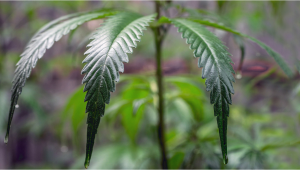
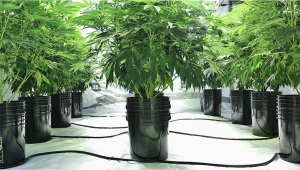
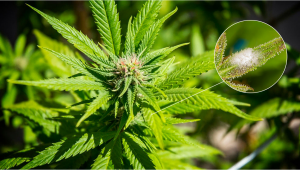
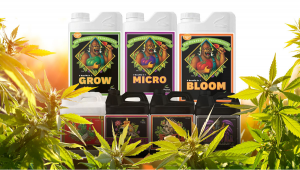



Comments